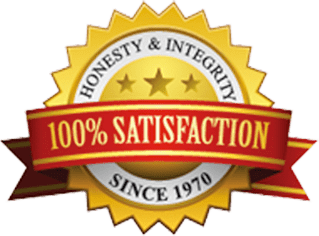Updated on March 14, 2025
Your home is one of your most valuable investments, not just financially but emotionally—it’s where your family creates memories and where your treasures are kept safe. Maintaining and protecting your home involves many responsibilities, including termite prevention. Termites pose a significant threat in Florida, causing homeowners and businesses millions of dollars in damage each year.
What Is Termite Tenting and How Does It Work?
Termite tenting, also known as termite fumigation, is one of the most effective treatments for severe termite infestations. This method involves covering your entire home or building with a specialized tent and releasing a fumigant gas designed to penetrate deeply into wood structures. The gas effectively eliminates termites hidden in inaccessible areas such as walls, beams, floors, and attic spaces.
How Long Does Tenting for Termites Take?
The termite tenting process typically takes three days. During fumigation, fans circulate the gas throughout the enclosed structure, ensuring thorough treatment. Once the fumigation is complete, the gas quickly dissipates without leaving any residue, making it safe for your family and pets to return.
Is Termite Fumigation Safe?
Yes, termite fumigation is safe when performed by certified professionals. JD Smith Pest Control specialists undergo extensive training and hold the necessary certifications to perform fumigations using restricted-use pesticides.
Key safety measures include:
- Professional application of fumigants
- Rigorous aeration procedures after treatment
- Use of specialized equipment (fans, hoses, fumigation tents)
- Air-quality testing and certification before re-entry
Fumigants leave no residue once your home has been aired out, making it completely safe for you, your family, and your pets upon return.
Is Termite Tenting Effective Long-Term?
Termite fumigation effectively eliminates active Drywood Termite infestations but does not provide long-term protection against future termite colonies. To ensure continued protection, we recommend ongoing preventative treatments, such as localized wood treatments, and regular professional inspections.
Why Choose JD Smith Pest Control?
Serving homeowners and businesses across Pinellas, Citrus, Pasco, and Hernando Counties, JD Smith Pest Control offers reliable termite solutions tailored to Florida’s unique climate and pest challenges. With decades of experience, we understand local termite behaviors and use targeted strategies to safeguard your property.
Schedule Your Free Termite Inspection Today
Don’t wait until termites cause costly damage—schedule your free termite inspection with JD Smith Pest Control today. Our experts provide comprehensive assessments and customized recommendations tailored to your home’s needs.
Frequently Asked Questions (FAQs)
How do I prepare my home for termite tenting?
To prepare for your termite fumigation, you’ll need to remove or secure food and medications, ensure all houseplants and pets are safely relocated, and vacate the property during the fumigation process. Our team provides detailed guidelines to simplify the preparation process.
Will fumigation leave residue on my belongings?
No. Once your home has been properly aerated after fumigation, the gas dissipates completely without leaving any residue on furniture, clothing, or household items.
Which areas do you serve?
JD Smith Pest Control proudly serves homeowners in Pinellas, Citrus, Pasco, and Hernando counties in Florida.
How much does termite tenting cost?
Several factors can affect the cost of termite tenting, including: Size of the Home, Extent of the Infestation, Preparation and Additional Services, Local Regulations and Permits, and Professional Expertise. We go into more detail with a local example on our blog: “How Much Does Termite Tenting Cost in Clearwater, FL?”
We have been proudly serving our local community since 1970, and would love the opportunity to rid your home or business of termites. Contact JD Smith Pest Control today—let us help protect your home and preserve your peace of mind.



